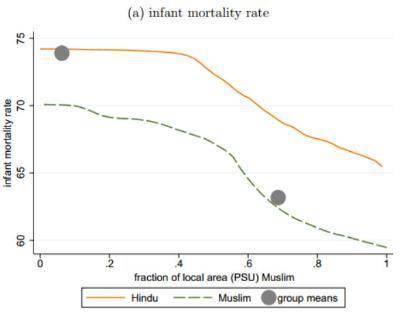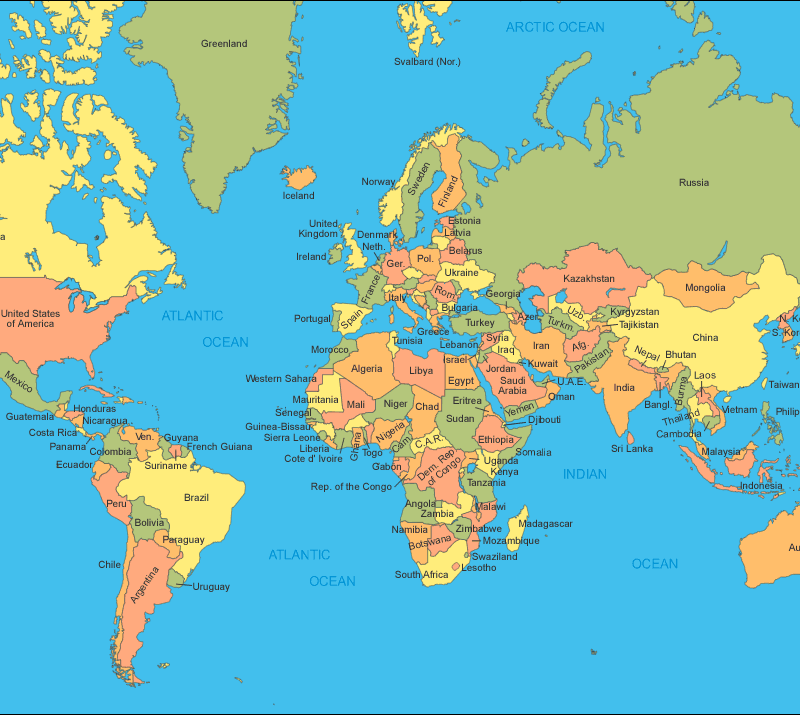
The New York Times ran a story on the crisis in India of open defecation on the front pages of its online portal on July 13, 2014. The issue tackled is an important one–according to the World Health Organization, half of the Indian population lacks access to functioning toilets, and at least in several India states, many relieve themselves outdoors despite having such toilets. This reality, in turn, exposes children to such a large load of infectious agents, from bacteria to worms, that they literally never grow to their full potential–even with adequate nutrition. It is inexcusable and humiliating for India that access to mobile phones, televisions and refrigerators has not been accompanied by better sanitation. The story could have been left at this. Yet to Gardiner Harris, the South Asia correspondent for the Times, open defecation alone wasn’t enough–religion and culture had to be dragged into the story in as inflammatory a manner as possible. Witness these passages in the story:
Open defecation has long been an issue in India. Some ancient Hindu texts advised people to relieve themselves far from home, a practice that Gandhi sought to curb.
And then:
In a little-discussed but surprising finding, Muslim children in India are 17 percent more likely to survive infancy than Hindus, even though Muslims are generally poorer and less educated. This enormous difference in infant mortality is explained by the fact that Muslims are far more likely to use latrines and live next to others also using latrines, a recent analysis found. So widespread housing discrimination that confines many Muslims to separate slums may protect their children from increased exposure to the higher levels of waste in Hindu communities and, as a result, save thousands of Indian Muslim babies from death each year.
The first has just enough truth to it to hide significant distortions. The latter soft-pedals Hinduphobia as poetic justice. To the casual reader, the New York Times’s South Asian correspondent has just asserted that India’s Hindus are bigots with absurd beliefs about sanitation who are only getting what they deserve when their children die more often than the Muslims they oppress. Harris thus transports a sanitation issue onto a religious conflict frame with heroes and villains, in the process slandering a belief system and incorrectly identifying which challenges truly prevent moving from open defecation to indoor toilets in the Indian context.
Hindus and their “Sacred” Texts The paper Harris cites begins its second section with two quotes — one from the Sunnah (an Islamic text) and one from the Manu Smriti (a Hindu text):
Muadh reported God’s messenger as saying,“Guard against the three things which produce cursing: relieving one’s self in watering-places, in the middle of the road and in the shade.” –Mishkat-al-Masabih (Muslim text) P:76 Far from his dwelling let him remove urine and excreta* –The Laws of Manu (Hindu text), Chapter 4 verse 151
Both of these seem contextually sensible, actually: in a desert setting, defecating in direct sunlight would better allow the bacteria to break down; in a tropical setting, defecation far away from one’s dwelling might help prevent infection from being carried back into one’s home during flooding. That these ideas cannot be identically applied today in an era of indoor plumbing, when presumably one is always defecating in the shade, and a population density ten times higher than the US, when one’s far is always another’s near, is simply to paraphrase Ta Nehisi Coates: even a Bible is sometimes just a toolbox, not a Bible. Moreover, the cited Hindu text is a Smriti, understood by Hindus to be interpretable and malleable over time and space. It does not have the status of a revelation. Growing up in a religious household, I never once was told that by pooping in a toilet I was committing a sinful violation of the Manu Smriti. For that matter, I can’t recall being told that any practice was sinful because it violated the Manusmriti. I would thus have been quite surprised if villagers cited the Manusmriti as their rationale for open defecation–and in fact, the Squat survey finds, they don’t. While even many Indians with toilets prefer open defecation, 74% of those say it is “pleasurable, comfortable, or convenient” to defecate in the open. Tradition or habit is cited by just 12%, slightly less than the 14% who cite problems with their lat rines (see section 3.4.1). And did Harris miss the part where India’s proudly Hindu prime minister said, “toilets before temples” and pledged money to this very initiative?
rines (see section 3.4.1). And did Harris miss the part where India’s proudly Hindu prime minister said, “toilets before temples” and pledged money to this very initiative?
For that matter why bring religion into this equation at all? Getting from 66% open defecation (the Hindu rate) to 40% (the Muslim rate in India — or for that matter, majority Hindu Nepal) would be a significant improvement; and getting infant mortality from 75 births per 1000 to 65 per 1000 would also be a major improvement (if misleadingly presented on a graph with truncated axes). But getting to 3% as in Bangladesh will require making significant strides in all religious groups.
Open Defecation is complicated It’s also worth pointing out that the higher infant and child mortality rates in the Hindu rather than the Muslim population in India are presented as self-evidently due to higher rates of outdoor defecation in the non-peer-reviewed paper Harris cites. The absence of a knowledgeable and uninvolved reviewer’s guiding hand should make us pause when we read a statement like:
This paper offers a simple solution to the puzzle in the form of an important sanitation externality
Keep in mind this entire paper is based on a cross sectional survey. Cross sectional survey data can never prove any risk factor to be the cause of any outcome. Correlation is not causation. There is a possibility that observed differences are due to selection bias (perhaps Muslims whose children have died are less likely to respond to a survey than their Hindu colleagues whose children have similarly died), measurement bias (one group is more ashamed to admit it defecates openly), and to confounding (perhaps Hindus who live in communities with higher rates of open defecation are also more likely to be socially ostracized, smoke, drink alcohol, or have other risk factors that put their children at risk for death).  Even a rough look at the graphs from the paper indicate noise in the data. India is massively an outlier when it comes to open defecation, but as noted in one of the studies Harris cites, large districts with the same rate of open defecation can have rates of stunting that vary as much as 40%. I very much want to believe that this cross sectional survey proves that the tragedies of child mortality and stunting in India had one clear and ameliorable root cause. But it would be irresponsible to draw such a sweeping conclusion on the basis of a cross sectional survey, particularly because open defecation is itself such a complex problem. As the squat report on open defecation also notes, many individuals (particularly men) still practice open defecation despite having toilets. But why? Well, maybe it’s because the effluent pipes flood, or because water simply doesn’t flow at certain times of the day. And where does all this sewage go — is it dumped directly back into the same rivers that supply the water to the village or the city? Is there money for a treatment plant? Are ambitious civil engineering projects that redirect sewage away from drinking water needed, as when engineers reversed the Chicago River? I get that Gardiner Harris is a journalist, not a dispassionate academic. I get that he wants to tell a good story. And I get that “open defecation is a major problem in India for multifactorial reasons” is a less exciting tagline than “Manusmriti-honoring Hindus raise their children in feces.” I also happen to agree with him that moving from open defecation to indoor plumbing is a vital public health measure. But, for once, I would appreciate a story about improvements India needs to make not being grafted onto a narrative of superstitious, discriminating Hindus getting their just deserts, in this case by watching their children die or grow up stunted. The New York Times’ readers deserve better.
Even a rough look at the graphs from the paper indicate noise in the data. India is massively an outlier when it comes to open defecation, but as noted in one of the studies Harris cites, large districts with the same rate of open defecation can have rates of stunting that vary as much as 40%. I very much want to believe that this cross sectional survey proves that the tragedies of child mortality and stunting in India had one clear and ameliorable root cause. But it would be irresponsible to draw such a sweeping conclusion on the basis of a cross sectional survey, particularly because open defecation is itself such a complex problem. As the squat report on open defecation also notes, many individuals (particularly men) still practice open defecation despite having toilets. But why? Well, maybe it’s because the effluent pipes flood, or because water simply doesn’t flow at certain times of the day. And where does all this sewage go — is it dumped directly back into the same rivers that supply the water to the village or the city? Is there money for a treatment plant? Are ambitious civil engineering projects that redirect sewage away from drinking water needed, as when engineers reversed the Chicago River? I get that Gardiner Harris is a journalist, not a dispassionate academic. I get that he wants to tell a good story. And I get that “open defecation is a major problem in India for multifactorial reasons” is a less exciting tagline than “Manusmriti-honoring Hindus raise their children in feces.” I also happen to agree with him that moving from open defecation to indoor plumbing is a vital public health measure. But, for once, I would appreciate a story about improvements India needs to make not being grafted onto a narrative of superstitious, discriminating Hindus getting their just deserts, in this case by watching their children die or grow up stunted. The New York Times’ readers deserve better.
UPDATE 9/17/2014: Please read this excellent post by Salil Mehta which creates an additional wrinkle: how OD rates interact with the urban vs. rural population at a between-nations level. This is a complicated issue.








































